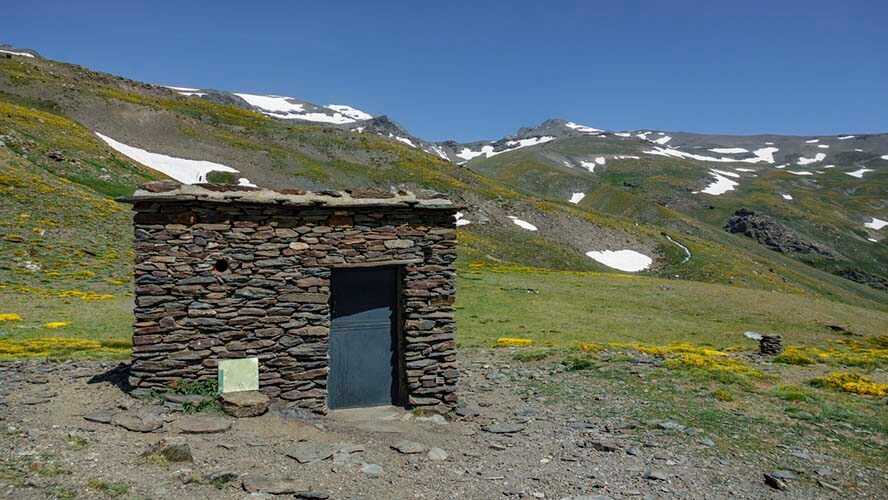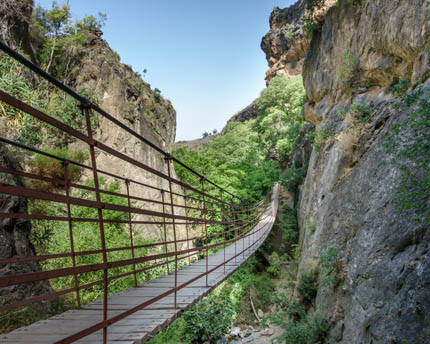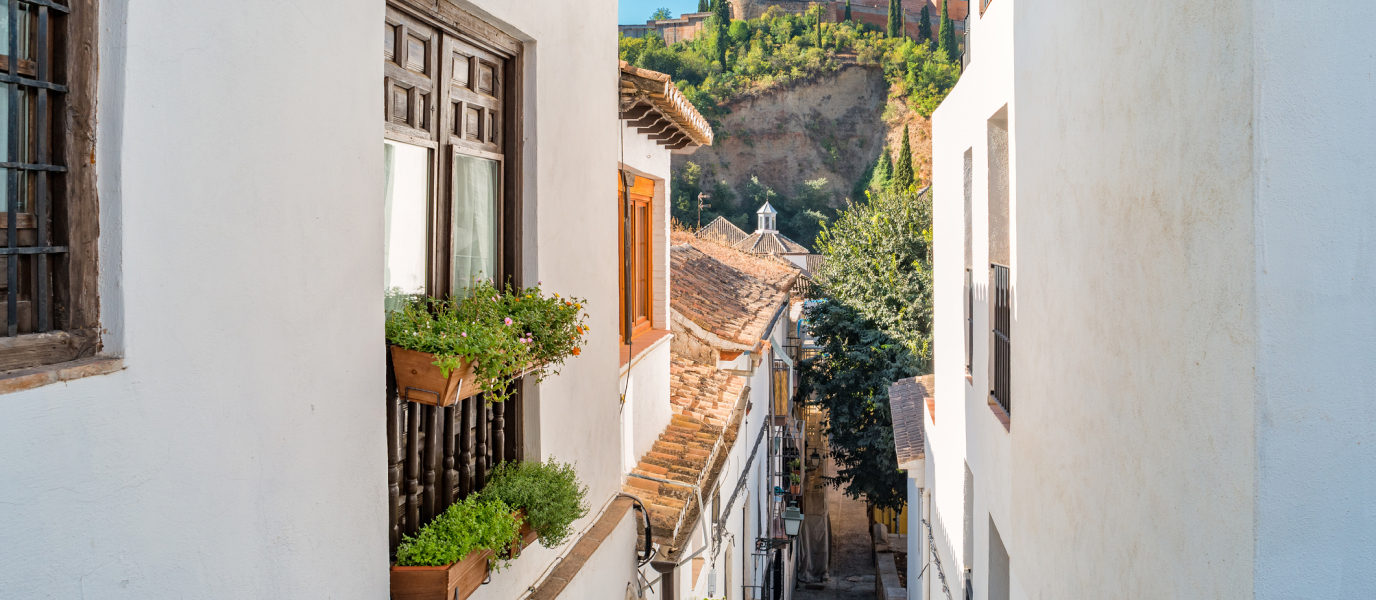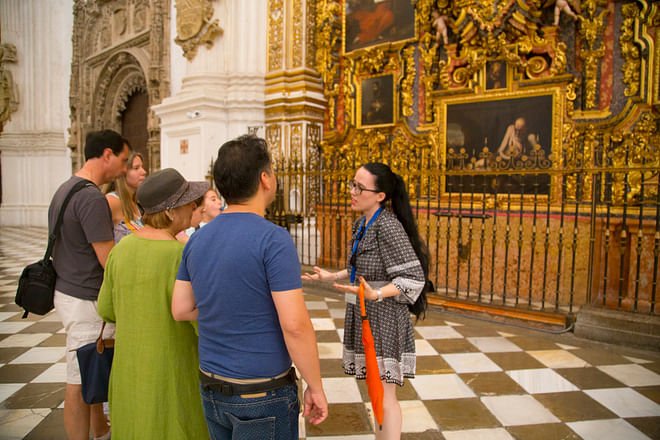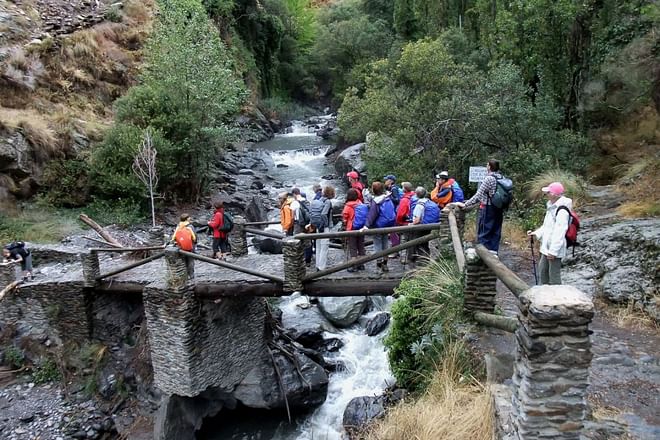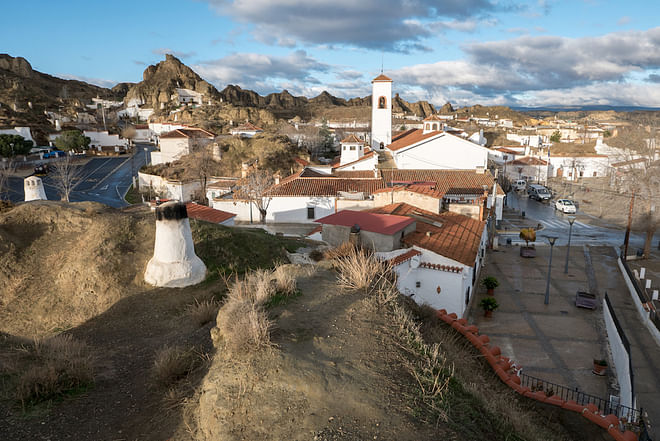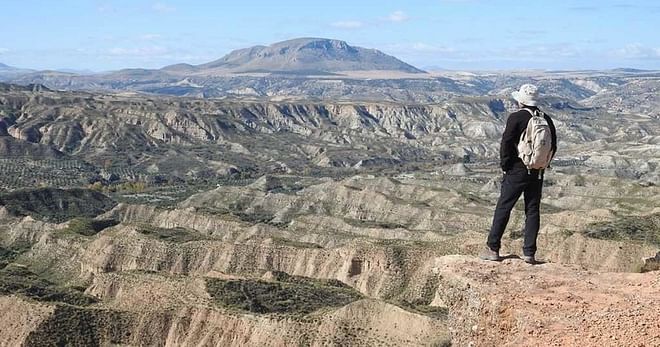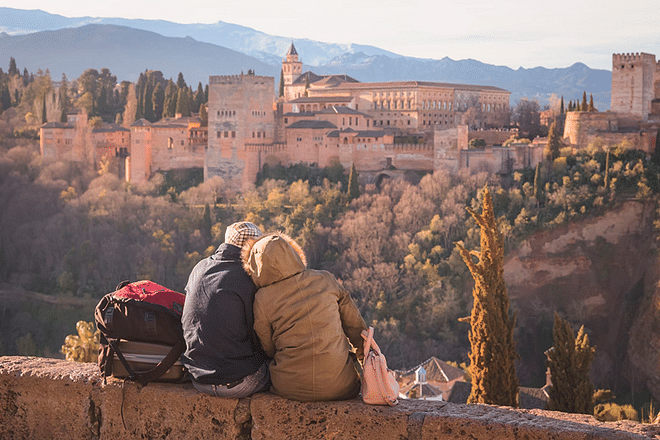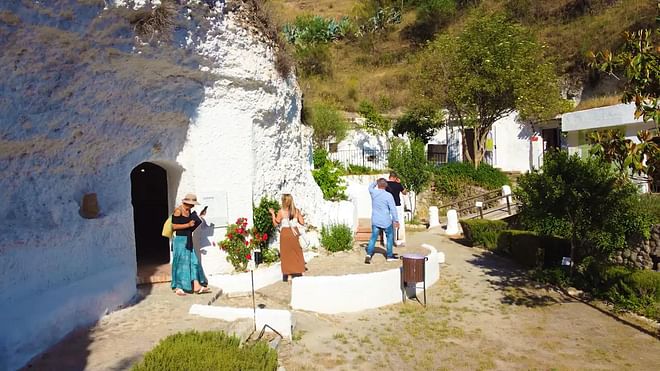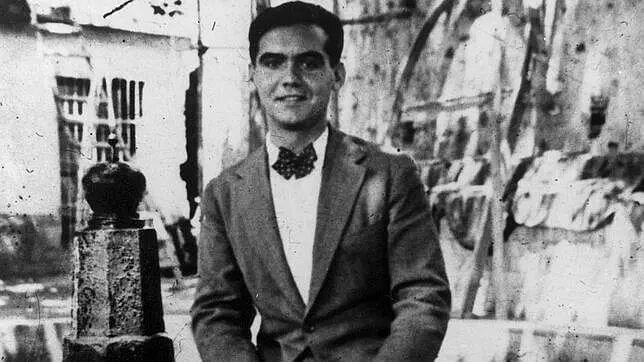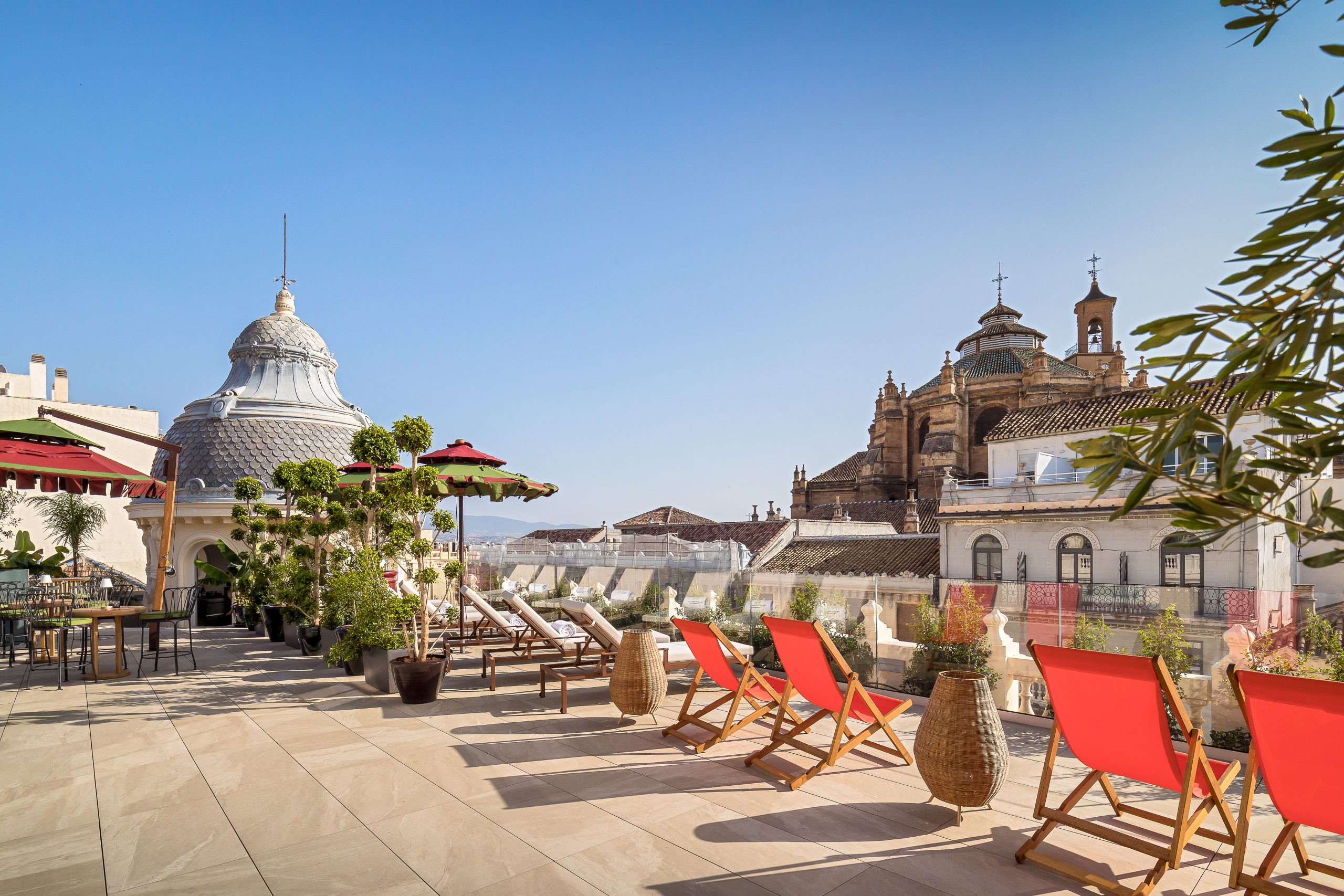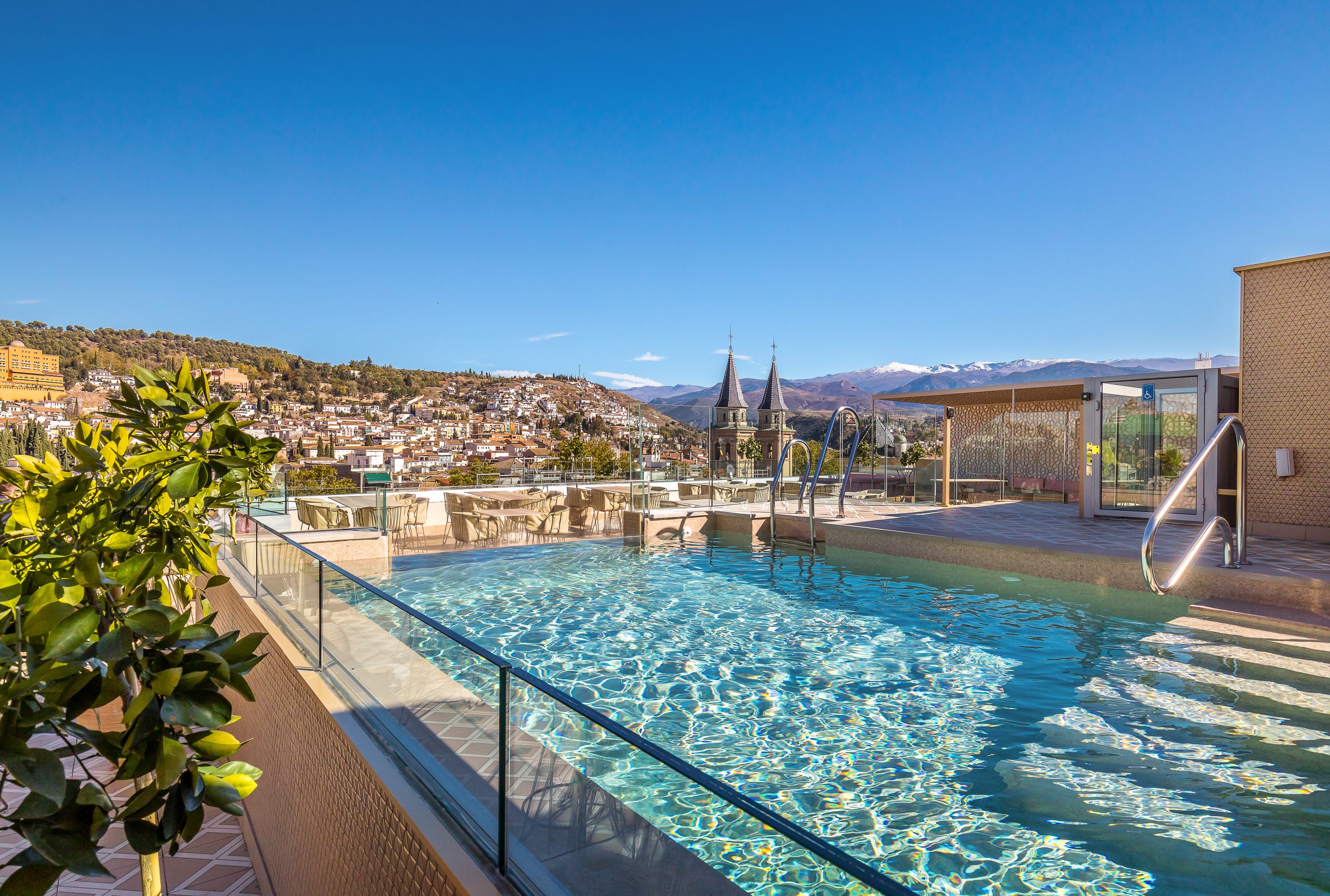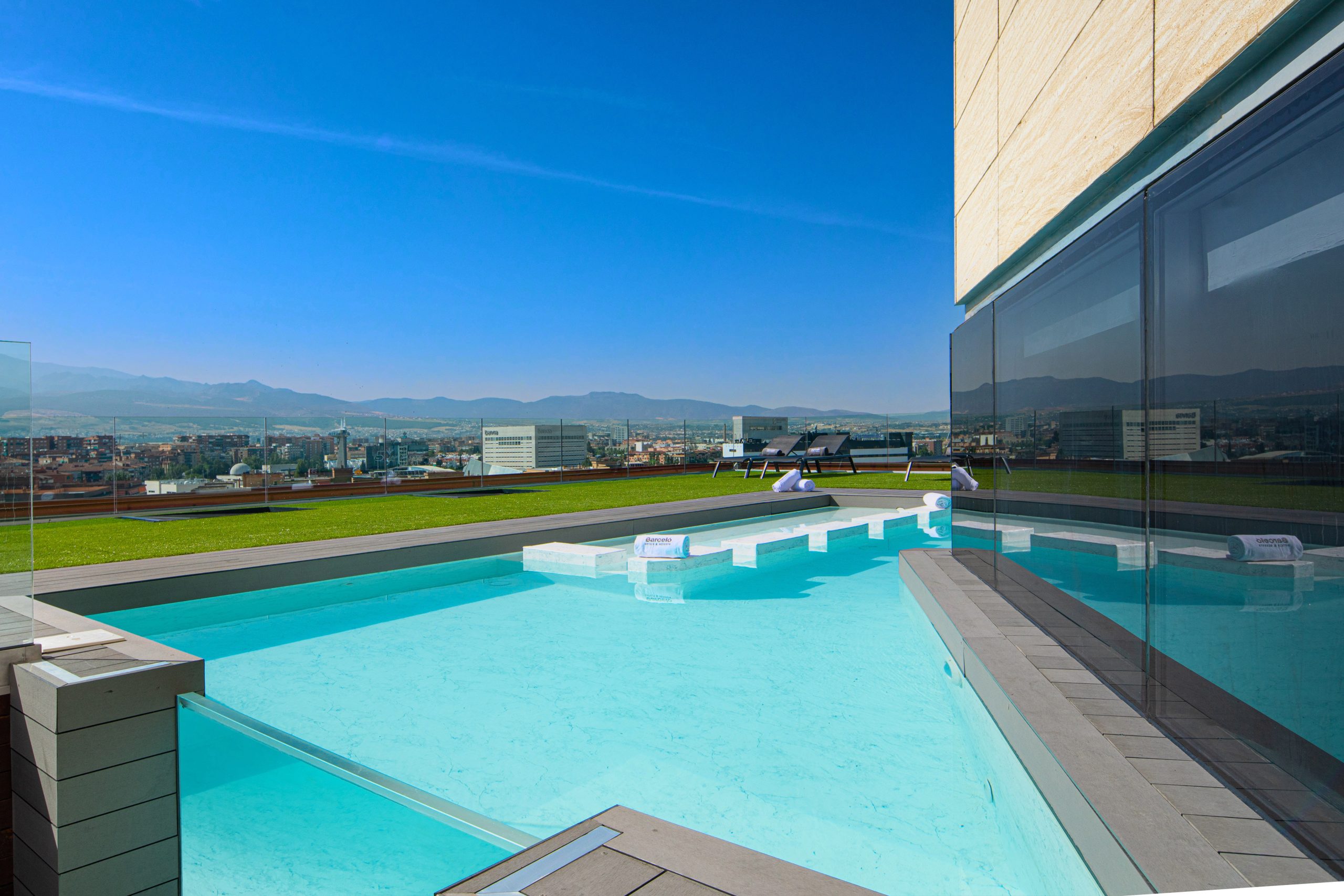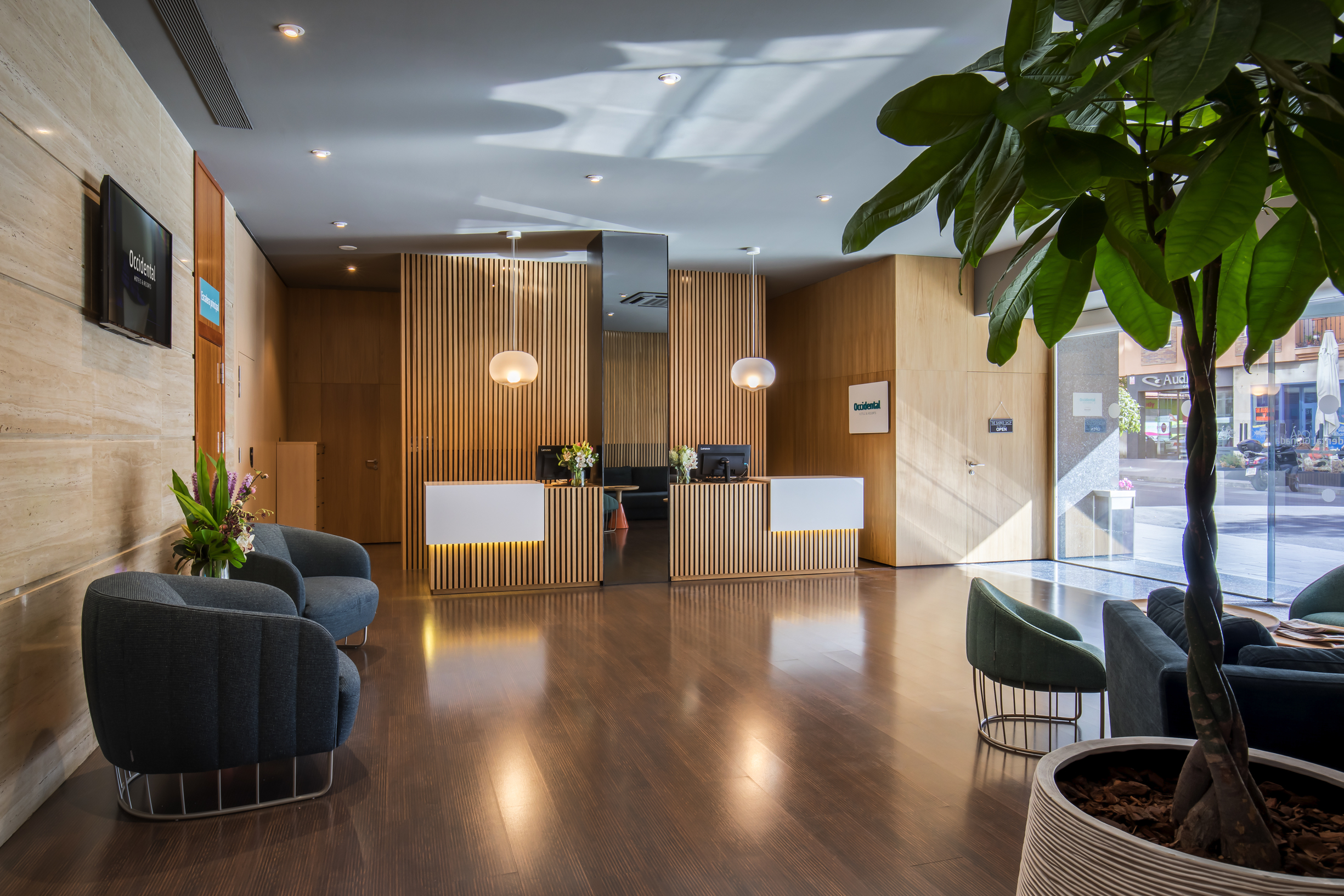The southern side of Sierra Nevada is home to Granada’s famous Alpujarra region, a craggy, remote landscape shaded by the mountains, with a history and charm that have inspired countless travellers, bohemians and writers for centuries. Its 25 towns—which include some of the highest in Spain—and the paths that connect them attract hikers and history buffs, and keep alive the legacy of a Morisco past that ended abruptly with the Rebellion of the Alpujarras in 1568. The various routes and excursions available in the region are also the perfect excuse to fill up on the savoury and filling dishes of the excellent local cuisine. We recommend starting off with these three classic itineraries.
The Poqueira Gorge route
There is no place that better represents Alpujarra’s soul than the Poqueira Gorge, an intricate valley defined by the river that shares its name and runs from the highest Sierra Nevada peaks. The trail along this gorge travels through three of the most beautiful Pueblos Blancos (White Towns) in the region: Pampaneira, Bubión and Capileira, all of which convey their Moorish past in the cuisine, the complex network of irrigation canals, the homes and the terraced fields where crops are grown.
The route, which received historic-artistic protection in 1982, begins at Plaza de la Libertad in Pampaneira, the town at the lowest elevation of the three. Taking the Royal Road, we immediately climb above the white tiered homes with grey, clay-like roofs called terraos, and in approximately 45 minutes we reach Bubión, where we can visit the artisanal weaving workshops that make the region’s famous rugs. Upon leaving the town, we will be taken aback by the vast amount of fruit trees (cherry, apple, pear and peach trees, to name a few) that are grown on the terraces along the trail.
After walking two kilometres, we reach Capileira and its labyrinth of narrow streets and tinaos, a typical architectural solution in Alpujarra consisting of covered alleyways between two houses on which a new space is created, such as an additional bedroom or another home. Due to its 1,436-metre elevation, from this town it is possible to see the snow-covered peaks of Sierra Nevada and the Mediterranean Sea. Before heading back, be sure to try the local cuisine at one of Capileira’s restaurants, which specialise in the filling plato alpujarreño (slow-fried potatoes, fried eggs, ham, longaniza sausage, black pudding and fried peppers), garlic soup, puchero a la gitanilla (gypsy stew), migas camperas, gachas pimentonas and traditional Moorish sweets.
Trévelez: In search of Cañada de las Siete Lagunas
Perched at an elevation of 1,480 metres on the slopes of Mulhacén, the village of Trévelez is one of the highest in Spain. It is also known for its exquisite cured ham, to the point that Queen Isabella II gave the town a seal in 1862 and made it the official supplier for the Royal House. Legends aside, this marks the start of the PR A-27 trail towards Cañada de las Siete Lagunas, a stunning landscape tucked away between the peaks of Mulhacén and Alcazaba, featuring seven permanent bodies of water surrounded by borreguiles (mountain meadows similar to the Arctic tundra) where many of Sierra Nevada’s endemic species grow. It is a stunning botanical jewel.
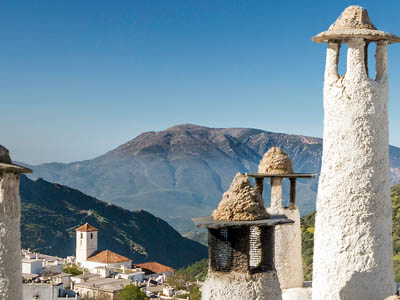
The path, which emerges from the northern side of the village, covers eight kilometres from the La Campiñuela area and crosses the Culo de Perro River before reaching the beautiful Chorreras Negras cascades where the water descends from the lowest of the seven lakes, Hondera Lagoon. When walking through the meadows around the lagoons, avoid stepping on the endemic plant species that only grow in Sierra Nevada’s high-altitude climate, including the famous plantago nivalis, gentian and pinguicula grandiflora (commonly known as the large-flowered butterwort). Before making our way home, we can rest a little at the Siete Lagunas natural shelter, a hole in a large rock on the southern side of Hondera Lagoon and a popular bivouacking spot for mountain climbers in the summer. The round-trip excursion takes approximately seven hours and cold water is always available at any of the many springs in the area.
Lanjarón-Órgiva: Reliving the Rebellion of the Alpujarras
Lanjarón marks the start of the famous GR 142 path, also known as the Alpujarra Trail, which stretches out across the entire southern side of Sierra Nevada to the first town in Almería: Fiñana. This 150-kilometre route passes through several villages in Alpujarra over the course of 13 legs, but we suggest doing the first. This 7-kilometre stretch connecting Lanjarón and Órgiva—approximately 3 hours walking—makes its way through a typical Alpujarra scrub landscape filled with aromatic plants and cicadas singing in the ravines, and it is a pleasure to stroll past country houses; natural springs; old water reservoirs; and olive, almond, fig and walnut groves.
This trail also invites us to imagine the earliest moments of the Rebellion of the Alpujarras in 1568. According to historic records, on 25 December 1568, hours after the first violent uprising of the Moriscos, the sacristan Miguel de Morales locked himself with 20 other Christians inside the church of Lanjarón in light of the disturbing news received from the region. A group of Morisco rebels led by Aben Farax reached the town, burnt the church and brought out the charred bodies to stab them in an open field. That same day, Aben Farax’s fighters forcibly recruited all of the young men in Lanjarón and set off for Órgiva along the same path we are walking on today.
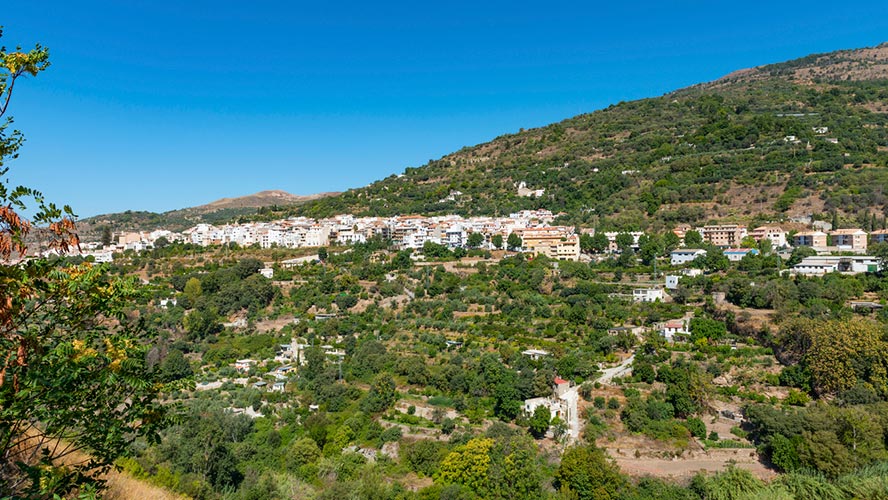
‘As their homes were broken into, people who attempted to hide in towers or safe places were trapped and surrounded by flames. Many were burnt, and anyone who surrendered was also killed since the rebels did not want to leave any Christian men over the age of 10 alive in the region. These unfortunate events began in Lanjarón, moved on to Órgiba Thursday afternoon and then made their way to Poqueira. From there, the smoke of sedition and evil continued to spread until it suddenly covered the entire region’, wrote the chronicler Luis del Mármol Carvajal in his book titled Historia de la rebelión y castigo de los Moriscos del Reino de Granada (History of the Rebellion and Punishment of the Moriscos in the Kingdom of Granada, 1600).
The route begins at the Water Museum located by the Lanjarón River. The village’s Arab etymology explains the importance of water: Al-lancharon means ‘a place of natural springs’. As the trail ascends, it offers lovely views of the town and passes alongside the Mezquerina irrigation canal, which is of Al-Andalus origin. The hermitage ‘Tajo de la Cruz’ (The Cliff of the Cross) is nearby and features a fantastic lookout point. From the hilltop, and before commencing the winding descent, it is worth taking a moment to breathe the fresh air and gaze at the horizon sprinkled with a few Alpujarra towns and the Mediterranean Sea. The last stretch before reaching Órgiva goes along the edge of the Sucio River, a tributary of the Guadalfeo River, which are much lovelier than what their names suggest (‘sucio’ means dirty and ‘feo’ means ugly in Spanish).
Our route ends in Órgiva’s historic quarter, the same spot that Aben Farax and his Morisco rebels reached on 26 December 1568. The Church of Our Lady of Expectation is located here, where the fierce mobs, ‘upon finding it defenceless, entered and destroyed the altarpieces, altar and baptismal font; poured out the holy oils and the chrism; pillaged the tabernacle and more’. The Castle of the Counts of Sástago is also nearby, and its tower was the only stronghold in all of Alpujarra that did not fall into rebel hands. Approximately 160 ‘Old Christians’ (i.e., not the Muslims who had been supposedly converted to Christianity), five local priests and several Morisco women and children taken as hostages were holed up at this spot where they withstood numerous attacks over the course of 17 days until the Marquis of Mondéjar’s troops arrived to free them on 12 January 1569. The town square is Plaza de la Alpujarra, which is particularly charming on market day and a place where we can take a break with some local sweets as we view the lovely tiles decorated with images of every town in the region.

























































